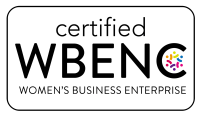What if we told you we knew what employees want more than other popular perks? Something that can also improve morale, increase productivity and contribute to retention?
Drum roll, please… It’s authentic communication.
Not only is this something your employees want, effective internal communication is also vital for fostering a positive and productive work environment, enhancing employee engagement, and aligning everyone toward shared organizational goals.
So, how can you ensure internal communications from your leadership team to employees are engaging, listened to, drive action… and ultimately well received? This requires careful planning and implementation, not only for the content and delivery but also for the channels used, the timing, and employee involvement in the process.
Taking these factors into account, you can enhance your internal communication strategies and optimize the impact of your messages – ultimately driving employee satisfaction, collaboration and motivation… and overall business success.
Not sure how to get started? Here are seven key factors to consider when developing internal messages:
1. Clear, Concise, & Consistent Messaging
Craft your messages with clarity, simplicity, and brevity. Use language that is easy to understand, avoiding jargon or technical terms. Clearly communicate the purpose, objectives, and desired outcomes to avoid confusion. Be consistent to build trust and reliability. Ensure that your messaging aligns with the organization’s values, vision, and goals. Clear, consistent communication helps employees understand the bigger picture and how their work contributes to it.
2. Two-Way Communication
Encourage open dialogue and feedback. Provide avenues for employees to ask questions, express concerns, and share opinions. Actively listen to feedback and address queries promptly. To promote a sense of inclusion and involvement, making employees more likely to engage in communication.
When employees feel their opinions matter and their concerns will be taken seriously, they are more likely to engage. This engagement can expand beyond passive reception of information into active participation and collaboration. Employees become more invested in the organization’s goals, and their commitment to achieving those goals increases.
3. Personalization
Tailor your communication to resonate with your employees. Consider their needs, preferences, and demographics. Use targeted messaging for different employee groups or departments, ensuring content is relevant and relatable to their specific roles and responsibilities.
Utilize a variety of communication channels to reach employees effectively. Consider a combination of email, intranet portals, digital signage, team meetings, town halls, or collaboration tools like Slack or Microsoft Teams. Different channels cater to different preferences and ensure wider accessibility.
4. Visual and Interactive Elements
Incorporate visual aids, such as infographics, charts, or videos, to enhance the impact and understanding of your messages. Additionally, interactive elements, like surveys, polls, or quizzes, can make communication more engaging and encourage active participation.
5. Timeliness
Deliver communications in a timely manner, ensuring employees receive relevant information when they need it. Avoid delays or withholding critical updates. If there are significant changes or developments, communicate them as soon as possible to maintain transparency and prevent rumors or misinformation. Delaying communication in such situations can hinder productivity and create a sense of uncertainty among employees.
6. Leadership Visibility
Foster a culture of leadership visibility and accessibility. When employees see their leaders actively engaging in internal communication, it reinforces the importance of the message and encourages them to take it seriously. Leaders should lead by example and actively participate in discussions or Q&A sessions.
7. Follow-up and Accountability
Take action based on the communicated messages. Track progress, measure outcomes, and provide relevant updates to demonstrate accountability and reinforce the value of employee input.
And, regularly evaluate the effectiveness of your internal communication strategies. Seek feedback from employees and adjust your approach accordingly. Use analytics and metrics to assess engagement levels and identify areas for improvement.
“Improving the business’ culture brings more than worker satisfaction. Almost half (46%) of the leaders say it leads to increased productivity, and 40% indicate it improves retention”
– (Content Marketing Institute Team, 2023)
By considering these factors, your business can unlock the full potential of its internal communication strategies. When internal communications are well planned and implemented, they foster a more positive work environment, enhance employee engagement, align everyone towards shared goals, and drive action.
By continuously evaluating and improving your communication efforts, you can cultivate a culture of open dialogue, collaboration, and continuous improvement, ultimately leading to greater productivity, motivation, and overall business success.
Need help unlocking your internal communication strategy?
We’ve developed a system for gathering information in a very efficient manner – so you aren’t spending a lot of time to end up with a lot of content.
Contact us for a free consultation.
Want to learn more? We liked this Forbes article on improving internal communications.

